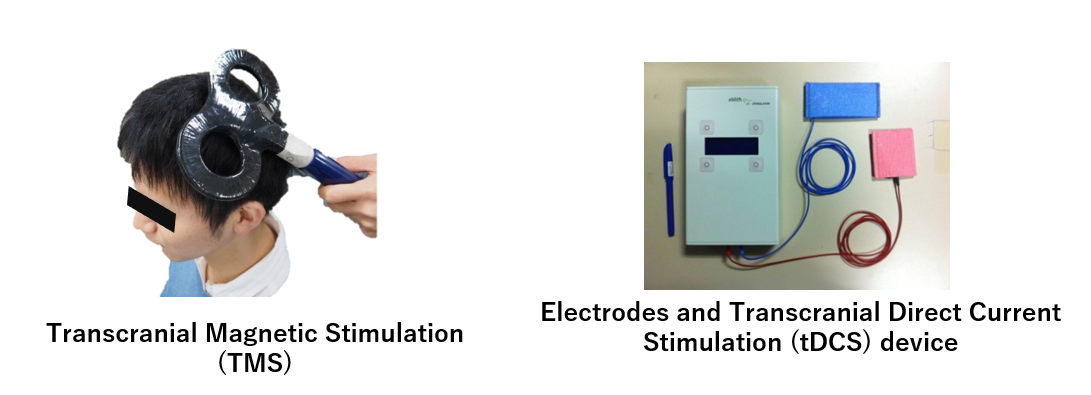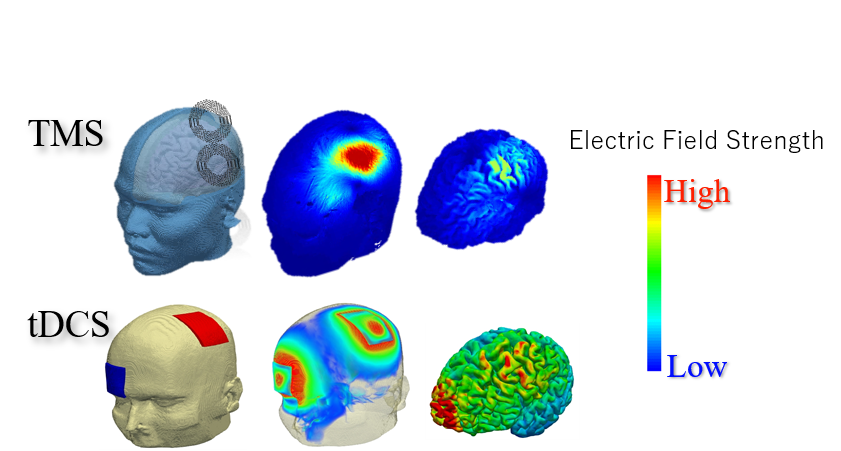Pinpoint estimation of where and how much electrical stimulation generated in the brain
Brain stimulation is a non-invasive technique that can generate a local stimulation effect on the brain tissue without making an incision. It is used for the treatment and diagnosis of brain diseases, and has recently gained attention as a rehabilitation treatment for depression and motor dysfunction. The main methods of electrical stimulation of the brain are transcranial magnetic stimulation (TMS: induces an electric current into the brain by placing a coil close to the head) and transcranial electrical stimulation (tES: generates an electric current into the brain by placing electrodes on the scalp), but their accuracy is not high.

In our laboratory, we are developing a method to accurately determine the necessary electrical stimulation intensity to each part of the brain, by implementing a detailed model of each patient’s head based on medical imaging technology such as MRI images, and combining it with electromagnetic field analysis techniques.
Using this method, we can visualize the intensity and distribution of the electromagnetic field in the brain in real time, which enables us to improve the accuracy of TMS and tDCS.

Electromagnetic field analysis technology has a high affinity with medical imaging such as MRI and nerve electrical propagation technology, and by combining these technologies, new solutions can be proposed. The mechanism that activates neurons is still unclear, so this field will continue to grow in the future.